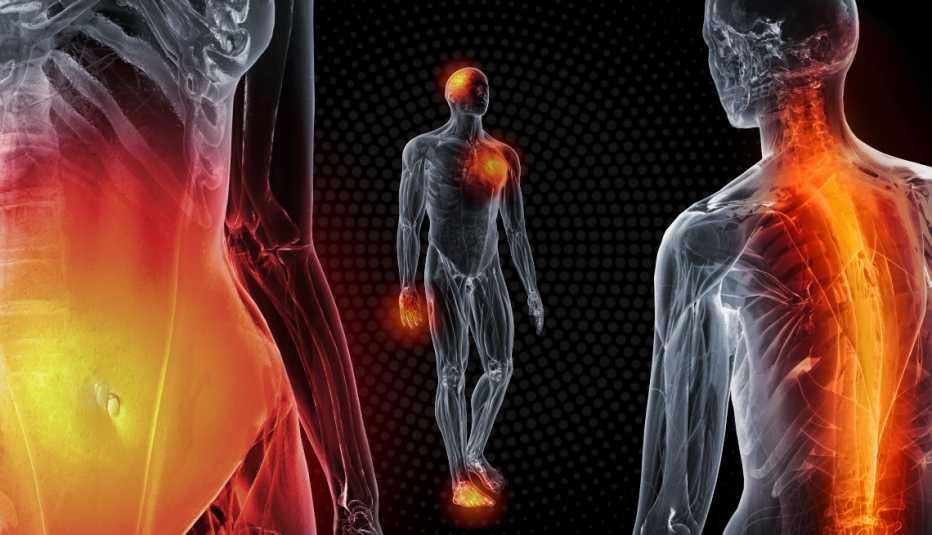AARP Hearing Center
Feeling wiped out. Random aches and pains. Frequent trips to the bathroom. What you might write off as signs of aging could be symptoms of chronic inflammation, which, if left untreated, can raise your risk of heart disease, dampen your immune system and leave you looking and feeling anything but your best.
Keep in mind that inflammation itself isn’t necessarily the villain; in fact, this downstream effect of the immune system can be a good thing. “It’s a normal part of physiology and your body’s response to anything dangerous,” says Robert Shmerling, M.D., a rheumatologist at Harvard Medical School and senior faculty editor at Harvard Health Publishing. When you’re exposed to something threatening, whether it’s pollutants in the air or cancer cells, your body releases inflammatory chemicals known as cytokines, which draw an army of white blood cells to the site. This is a short-term response, which disappears within hours, if not days.
But sometimes this inflammation persists or your body goes into overdrive to rid itself of something that it thinks is foreign that isn’t. In that case, your body is essentially attacking itself, Shmerling says. Lifestyle factors, such as a poor diet, being sedentary, smoking and drinking, and being overweight, can also cause inflammation.
Older adults are especially susceptible. “The aging process is not kind when it comes to inflammation — organs are less resilient to its effects, and as you age you’re more vulnerable to the insults of the outside world,” says Daniel Monti, M.D., the Ellen and Ron Caplan chair of the department of integrative medicine and nutritional sciences at Thomas Jefferson University in Philadelphia. As Monti explains, lifestyle habits that you could get away with when you were younger — not getting enough sleep, eating junk food, being exposed to constant stress — can take their toll and cause more inflammation as you age.
Here are seven signs of chronic inflammation to keep in mind.
1. Fatigue
A common misconception about aging often causes this red flag to be missed, notes Bindiya Gandhi, M.D., an integrative medicine specialist in Atlanta. “Many older adults think it’s normal to take naps in the afternoon as they age, but it really isn’t; it’s a warning sign that something’s going on underneath.”






































































Hallie Levine is a contributing writer and an award-winning medical and health reporter. Her work has appeared in The New York Times, Consumer Reports, Real Simple, Health and Time, among other publications.